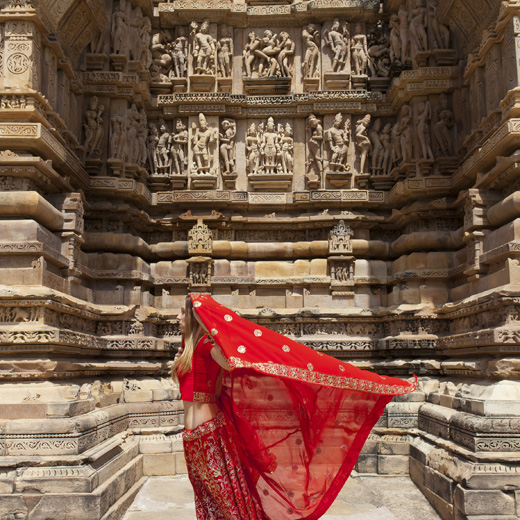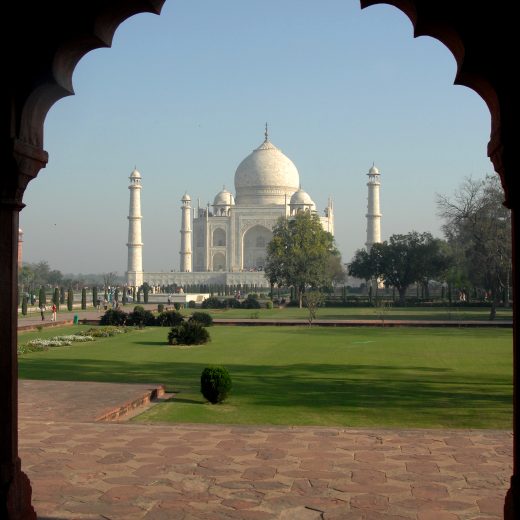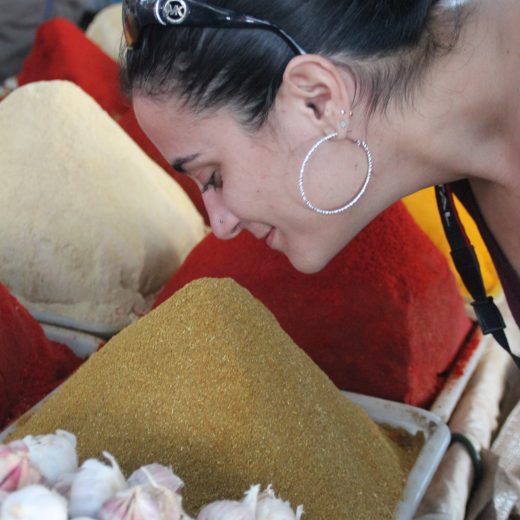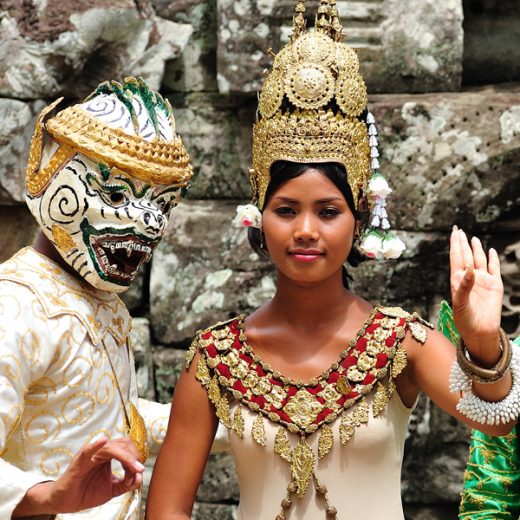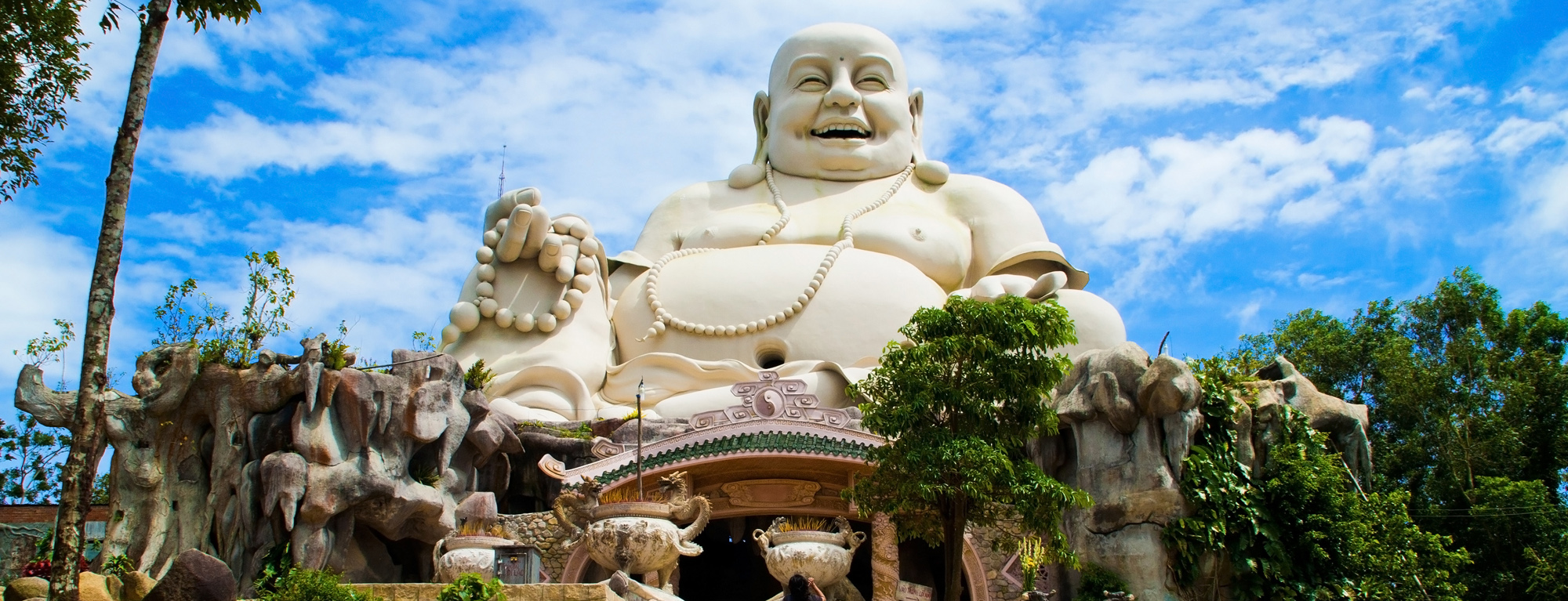
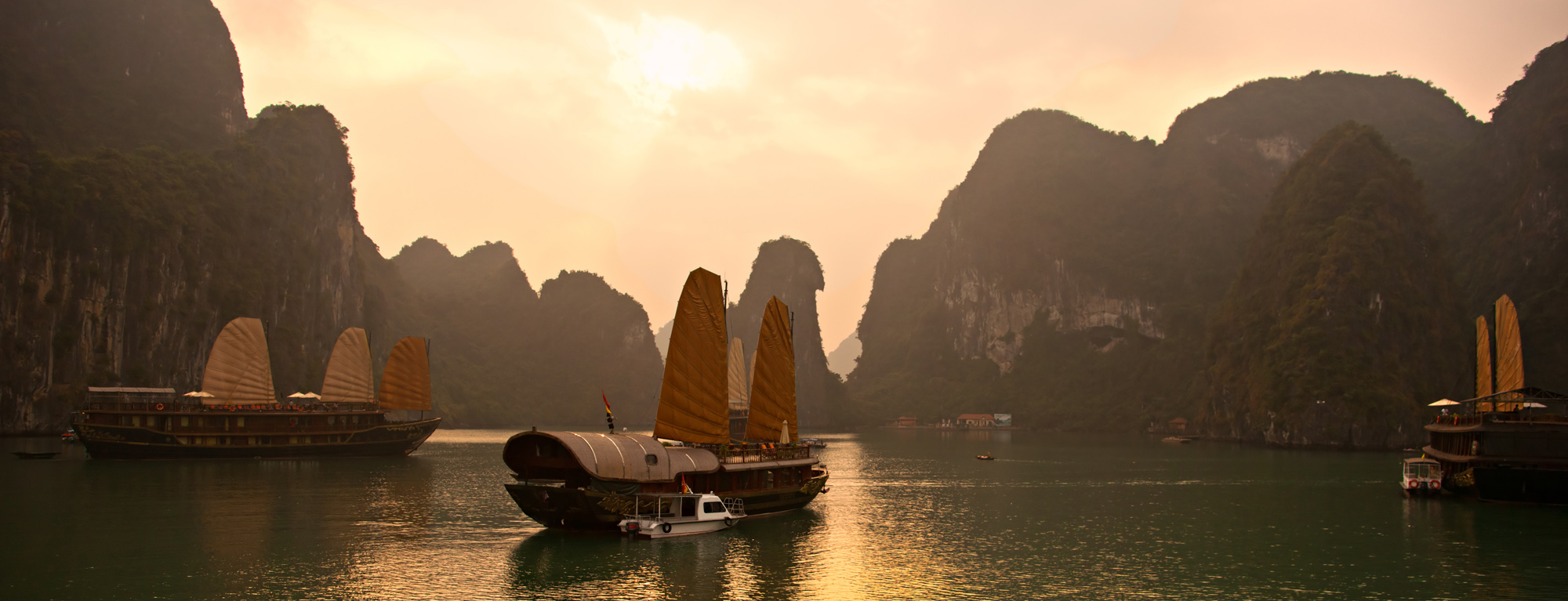
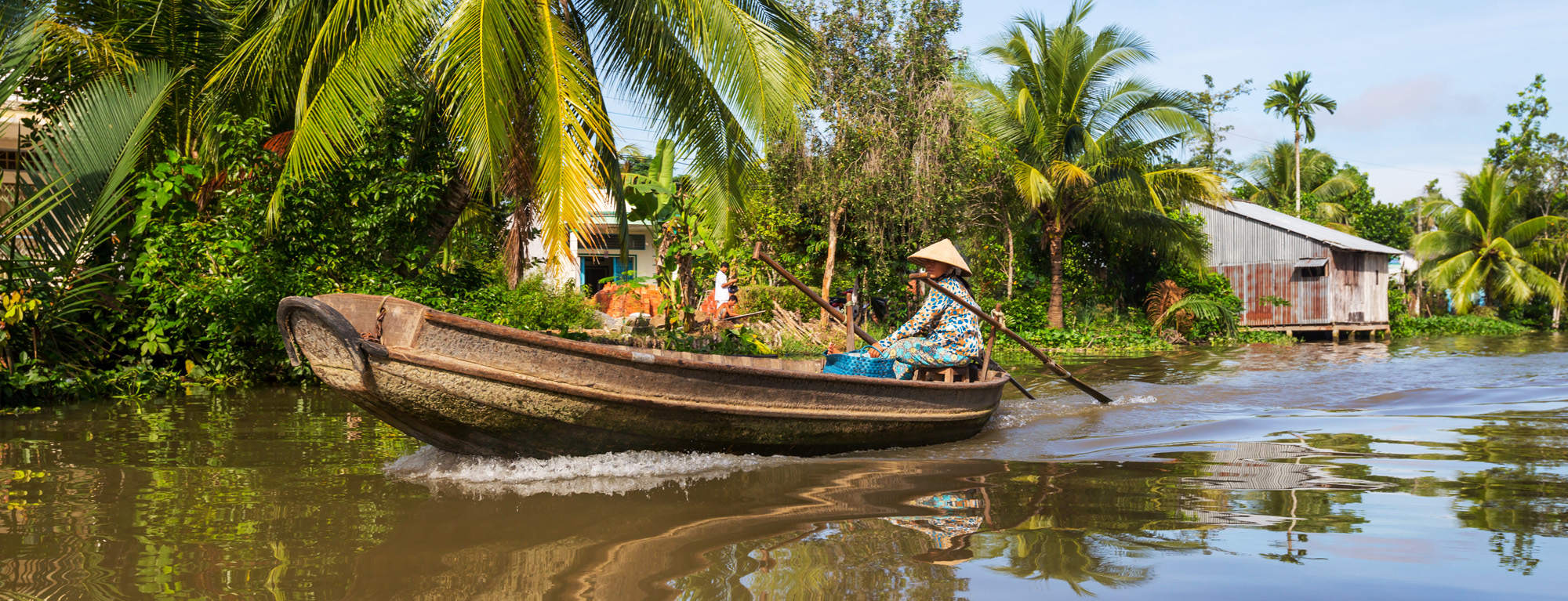
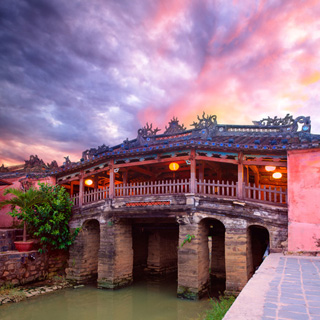
YOUR JOURNEY INCLUDES:
- Internal air within Vietnam, as well as airfare between Ho Chi Minh City and Siem Reap on
the Cambodia extension. - Superior accommodations throughout as indicated or similar.
- Boat tickets according to the itinerary.
- Breakfast daily; other meals as specified in itinerary (B=Breakfast, L=Lunch, D=Dinner).
- Services of English-speaking local guide in each city on the itinerary.
- All touring via air-conditioned motor coach.
- Water in vehicles and with all meals.
- All entry fees.
- All applicable hotel taxes and gratuities for baggage handling.
- Complimentary baggage tags and passport wallet.
Upon your evening arrival in Vietnam’s fascinating capital, the city of lakes, shaded boulevards and public parks that stretch along the banks of the Red River, you will be met and transferred to The Ann Hotel Hanoi, your home for the next two nights. After taking some time to relax, meet your group this evening and enjoy a welcome dinner of fine Vietnamese cuisine.
The Ann Hotel is centrally located, and you’ll find yourself within 5 minutes walking distance of many of the sights Hanoi has to offer. The rooms are comfortably appointed and quiet, despite a view over the bustling streets below. Each room features a king size bed, complementary WiFi, and hair dryers. Overnight at THE ANN HOTEL HANOI http://theann.com.vn/
Begin your exploration with a tour of the home and Mausoleum of Ho Chi Minh, the founding father of modern Vietnam. Ho Chi Minh Mausoleum in Hanoi is an important landmark of the city and stands integrated to the political and social history of Vietnam. Ho Chi Minh Mausoleum draws special emphasis because it testifies about Uncle Ho the Vietnamese leader who founded the communist regime partially in Vietnam in 1950 and served as both the Prime Minister and President of North Vietnam. Known to the world as Bác Ho or Uncle Ho meaning “he who enlightens” he also inspired the foundation of Ho Chi Minh City. Near the mausoleum is the two-room stilt house where Ho Chi Minh lived from 1948 until his final days.
Discover one of the oldest sights in Hanoi, the Temple of Literature, a compound which is not only a place of worship but an expression of the Vietnamese esteem for education and literature. The “temple” was founded in 1070 by Emperor Ly Thanh Tong, and is dedicated to the Chinese philosopher Confucius. Six years later, Vietnam’s first university was founded here to teach the children of royalty and aristocracy. In 1484, another Emperor Le Thanh Tong had stele erected in one of the courtyards to record the statistics and achievements of those who received doctorates from the university. The school continued until its functions were transferred by Emperor Gia Long to the new capital at Hue in 1802.
After lunch, depart by rickshaw and explore the lively Old Quarter also known as the 36 streets; this bustling area of narrow streets is home to literally thousands of small businesses and shopkeepers. It’s a great place to explore with plenty of photo opportunities. Continue with your visit to the scenic Hoan Kiem Lake, containing an islet with the tiny Tortoise Pagoda. Hoan Kiem Lake, or the Lake of the Restored Sword, is located directly in the center of Hanoi. The name is derived from a legend involving Emperor Le Thai To, in which he came across a giant tortoise while cruising on the lake. The tortoise took his sword that had secured victory against the Chinese aggressors of the Minh Dynasty. The emperor named the lake after this episode. No one knows if the tortoises of Hoan Kiem Lake are real or fiction.
Unbelievably, there are tortoises in the mysterious and murky waters of Hoan Kiem Lake, surfacing on rare occasions, and bringing luck to anyone fortunate enough to see one.
Following a dinner of typical Hanoi fare, enjoy a performance of the worldfamous Water Puppet Theatre. Thang Long Water Puppet Theater in Hanoi offers insightful perspectives into the cultural richness of the country. This unique art form has a stage made of rice paddy, river or pond. The marionettes are moved skillfully across the water’s surface with the help of underwater poles, rods and strings. Two or more people are required for heavy and complex puppets. The puppets dance, dive, glide and swim across the stage along with traditional Vietnamese music being played befitting the mood of the play. Ducks, snakes, dragons and monkey puppets dance, dive and swim under the surface of the water. The audience is transported to a world of fishermen and villagers, of knights and beautiful princesses, of water buffalo, fish, frogs, unicorns, lions and magic turtles.
Overnight at THE ANN HOTEL HANOI
A most scenic drive through the countryside reveals a fastchanging agricultural and industrial region. Arrive at Halong Bay, the Emerald Bay of Vietnam, and a UNESCO World Heritage Site. This vast bay was the inspiration for generations of Vietnamese poets, and is filled with more than 3,000 limestone “peaks” or karsts that jut from the deep blue water as far as the eye can see. Board a comfortable traditional Vietnamese junk for an up-close look of the seascape and the daily life of Vietnamese fishermen.
Traditionally built, your junk has facilities of the highest standard, including private cabins with ensuite bathrooms, and a spacious dining room serving traditional Vietnamese cuisine. Explore the many caves and islets as you glide by the floating villages in the bay, stopping to swim in the Tonkin Bay.
This morning, enjoy more time aboard the Pelican in Halong Bay, visiting a natural cave. After you disembark, return to Hanoi for your flight to Hue. Upon arrival, check into your hotel, the Imperial Hotel, and enjoy dinner.
Imperial Hotel is the first five-star hotel in Hue, located in the heart of the city. The rooms feature classic and polished wooden floors, natural fabrics, as well as classy and elegant furnishing. The bedroom is equipped with river views, WiFi internet access, hair dryers and air conditioning.
Overnight at the IMPERIAL HOTEL HUE. https://www.imperial-hotel.com.vn/index.html
Located in the heart of Hue is the Imperial Citadel, a vast complex build in the early 19th century and modeled, in part, on the Forbidden City in Beijing. Within its walls, there are numerous palaces and temples as well as a library and museum. Approach the city past the sticking Flag Tower, where a giant Vietnamese flag waves proudly overhead. The Flag Tower or the King’s Knight is a vast structure of three flattop pyramids, one lying on top of another. Continue through Ngo Mon Gate, constructed in 1833 during the reign of Emperor Minh Mang. The gate leads to the Imperial Palace and was once the observation point for the Emperor to review his troops and for ceremonial use.
After joining a family for a typical lunch, stop for a visit at the tomb of Emperor Tu Doc. This tomb, constructed between 1864 and 1867, is the most popular and impressive of the royal mausoleums, which the Emperor designed it himself to use before and after his death. The park surrounded his mausoleum been shaped according to the dictates of geomancy, also known as Feng Shui.
Continue on to Hoi An, an ancient Chinese and Japanese trading port, where you will stay the next two nights. Tonight, you will eat at “Street Restaurant,” run by Streets International, a non-profit organization, training underprivileged street youth on skills in catering and hospitality.
Your home for the next two nights is the ideal base for exploring the area, while also set on the beachfront. Many Hoi An sights are 10 minutes’ drive from the hotel, which offers free shuttle service to the downtown. The comfortable rooms are designed with Chinese and Vietnamese architecture. The hotel has a spa, restaurant, and offers activities including yoga, cooking classes, and bicycling around town. Overnight at ANCIENT HOUSE VILLAGE.
http://ancienthousevillage.com/en/home.html
Hoi An is an ancient town – a world cultural heritage site, located 18 miles south of Danang City, and 37miles northeast of Tam Ky. Hoi An used to be an international trade center by sea on the southeast area in the 16th and 17th centuries. It was the busiest trading port in Dang Trong region of Vietnam under the reign of Nguyen as merchants from Japan, China, Portugal, Spain, and Holland often landed for exchanging, purchasing commodities. Up to now, the ancient town of Hoi An intact preserves its original architectures, including houses, temples, Schedules, accommodations and prices are accurate at the time of writing. They are subject to change pagodas, streets, ports, civil buildings, religious structures and other non-religious worshipping structures. The everyday lifestyle with deep-rooted customs and cultural activities is fascinating. Hoi An also attracts tourists thanks to its poetic and picturesque landscapes such as Thuan Tinh islet, Cua Dai beach, together with traditional handicrafts and famous local specialties.
Spend the morning exploring the old town of Hoi An and its fabulous treasures, its narrow streets lined with traditional houses and the harbor, now classified as a World Heritage Site by UNESCO. Enjoy lunch at a local restaurant with a view of the city before the balance of your day is left at leisure – continue strolling through the old city or explore the city’s beach. Rejoin the group for dinner this evening. Overnights at the ANCIENT HOUSE VILLAGE.
After breakfast, begin your exploration of Ho Chi Ming City with a visit to the Thien Hau Pagoda. This 19th-century temple is dedicated to the goddess Thien Hau, the protected Goddess of Sailors. It is believed that Thien Hau can travel over the oceans on a mat and ride the clouds to save people in trouble on the high seas. Mingle with worshippers and other visitors beneath the large coils of incense suspended overhead.
Wander through Binh Tay Market has a great clock tower and a central courtyard with gardens. Enjoy lunch at a local restaurant.
This afternoon, dive into modern history with a tour to the Reunification Palace, formerly the Independence Palace of the South Vietnamese president. This 60’s style building was famously stormed by tanks on April 30, 1975 signifying the fall of South Vietnam. It has been preserved in its original state, and the original tanks remain on display near the entrance gates. Continue to the History Museum, housing an excellent display that traces the origins of the indigenous Vietnamese. Next you’re off to Notre Dame, an impressive neo-Romanesque cathedral in the center of city, the ‘wedding cake’ styled Hotel D’Ville and Dong Khoi Street, formerly the center of haute couture in Saigon when it was known as Rue Catinat.
Afterwards, it’s sadly time to say goodbye to Vietnam as you’ll be escorted to the airport for your return flights home, arriving the next day.

